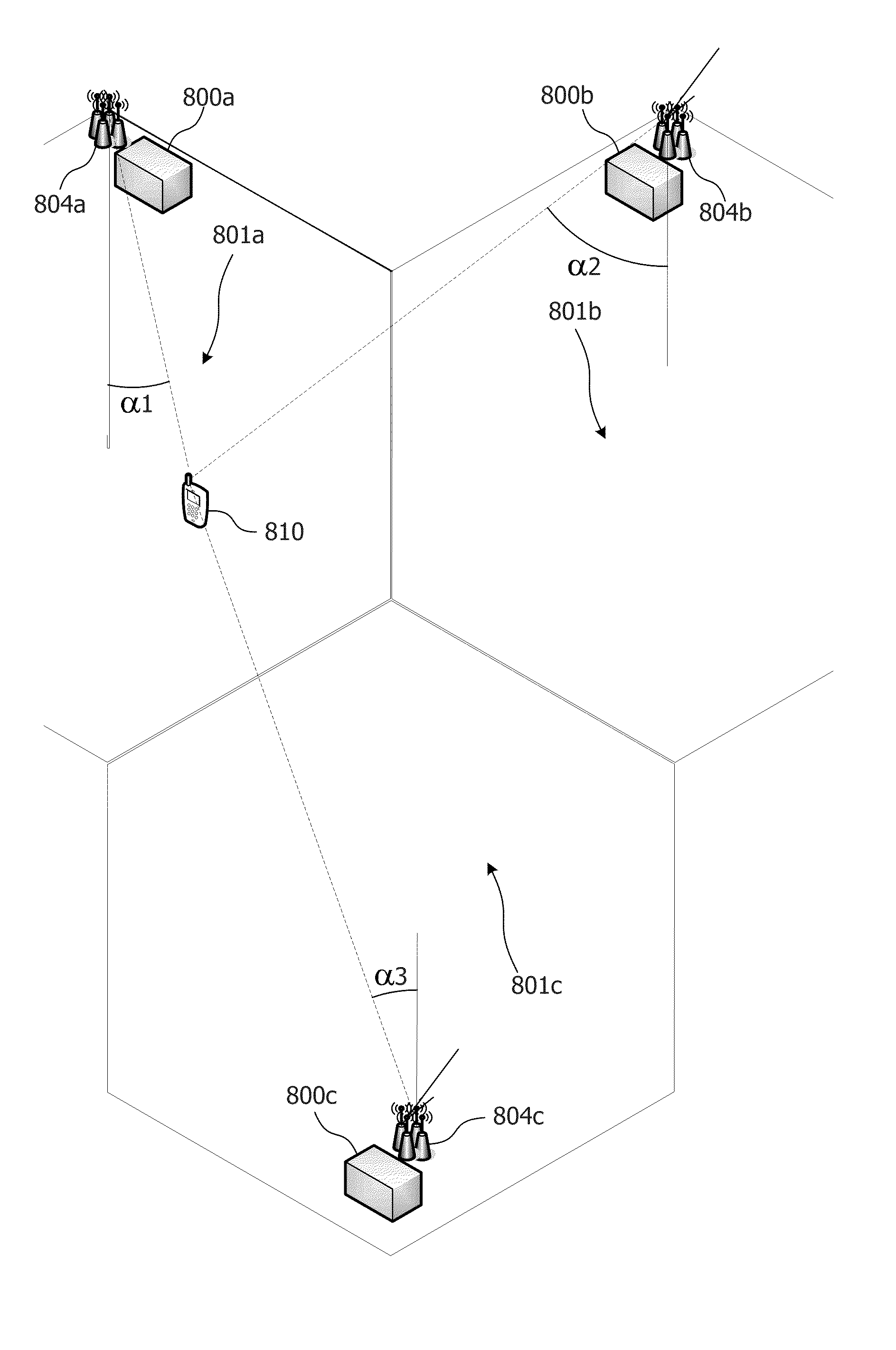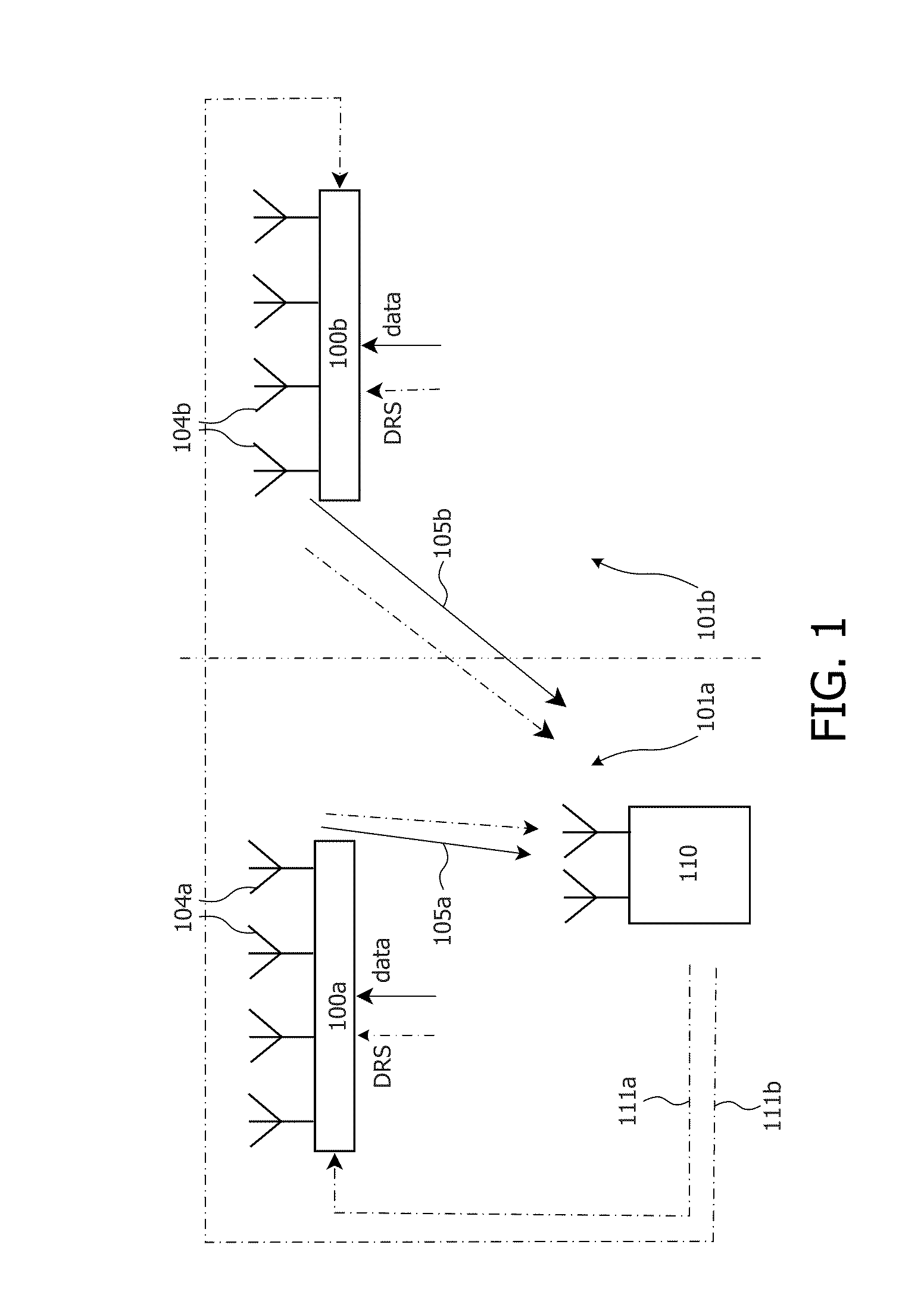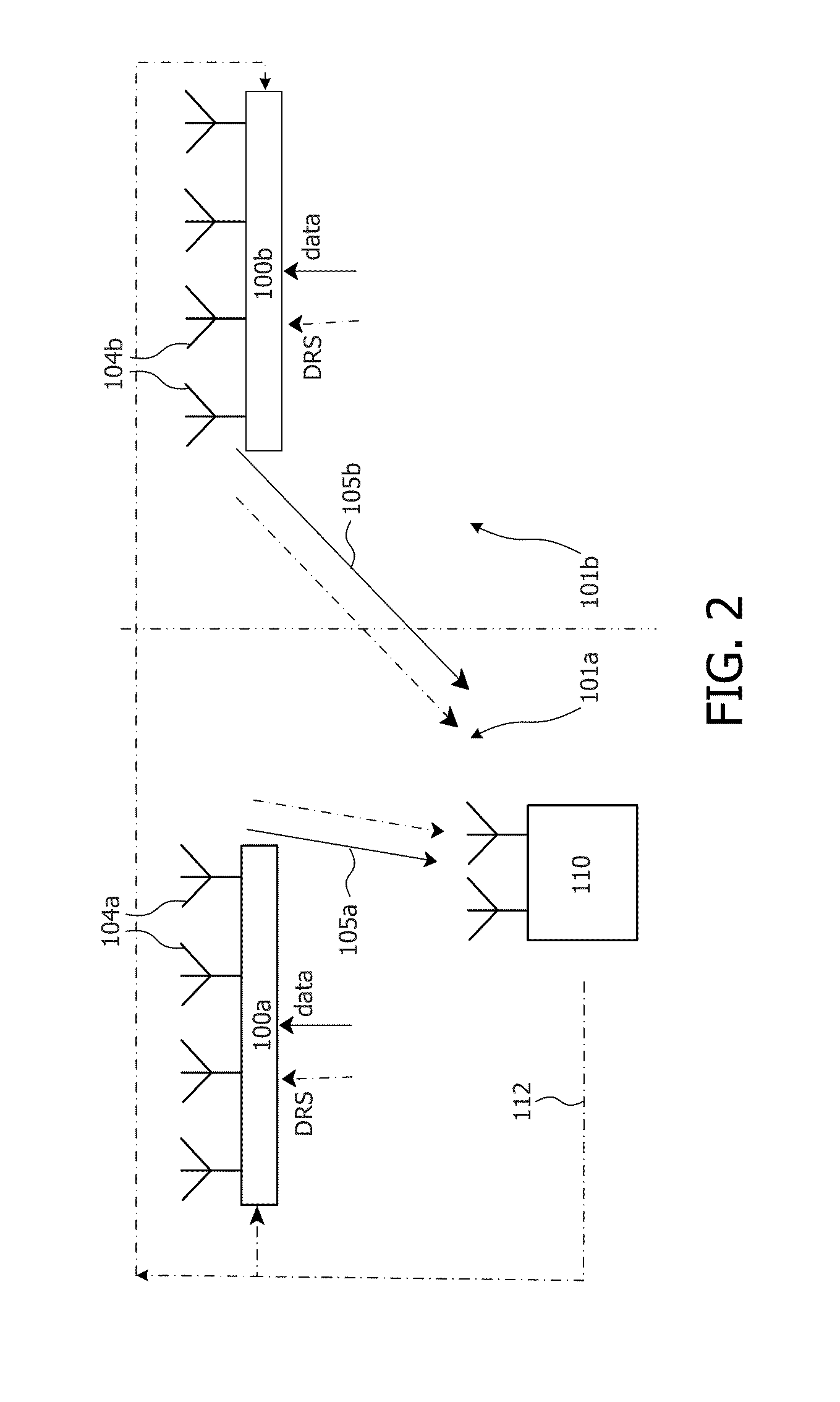Method for signalling a precoding in a cooperative beamforming transmission mode
a beamforming transmission mode and beam precoding technology, applied in the field of communication, can solve the problems of large amount of signalling and overhead, difficult to obtain efficient beamforming, lack of flexibility, etc., and achieve the effect of reducing the amount of data required for the second indicator and keeping a certain amount of flexibility
- Summary
- Abstract
- Description
- Claims
- Application Information
AI Technical Summary
Benefits of technology
Problems solved by technology
Method used
Image
Examples
first embodiment
[0049]In accordance with the invention, the secondary station 410, based on the estimation of the channel coefficients, chooses a first preferred precoding matrix in a primary codebook for the cell 401a. The secondary station 410 uses the primary codebook to extract an index that may then be signalled to the first cell 401a by means of a signaling message 411a.
[0050]Furthermore, the secondary station may choose in this first embodiment a preferred precoding matrix for the second cell 401b out of a secondary precoding codebook. This secondary precoding codebook is a limited codebook in the sense that it contains a subset of precoding matrices, namely a limited number of precoding matrices (e.g. 1, 2, or more but less than the total number of the conventional set of available precoding matrices for a conventional secondary codebook). This secondary codebook depends on the value of the preferred precoding matrix for the first cell 401a, or on the value of the index to be signaled in t...
second embodiment
[0078]As a simple example for a better understanding of this second embodiment, let us consider that the cells 601a and 601b (at the same frequency) supported from the same base station site 600 are using uniform linear antenna arrays, with rank 1 transmission in a free-space / line-of-sight channel (LOS). In this case the optimum precoding coefficients depend mainly on the angle α with respect to the antenna array and the codebook can be based on DFT coefficients (i.e. for a given spatial signature, in this case a unique direction with respect to the antenna array, the corresponding precoding coefficients can be obtained via a Discrete Fourier Transform). For a secondary station 610 likely to benefit from CoMP (Cooperative Multipoint Transmission), i.e. in an area served by the two cells, the angles with respect to the two antenna arrays are likely to be similar. Therefore if the secondary station selects optimum precoding coefficients from a codebook for the serving / first cell, the ...
third embodiment
[0127]In accordance with a third embodiment, the precoding scheme may be used as well (or only) by a primary station involved in a cooperative beamforming. In a similar way as the embodiments described previously, the primary station selects a first precoding matrix to signal the precoding applied on the antennas of a first primary station, e.g. itself or another primary station involved in the cooperative beamforming. Then, the precoding of a second primary station may be limited to a subset of precoding matrices (e.g. 1, 2, 3 matrices but less than the whole set of available precoding matrices for the second cell). Then, the precoding of the second cell is chosen in the limited set of precoding matrices and is applied to a primary station involved in the cooperative beamforming. The first primary station may signal the first precoding matrix (by use of a precoding matrix index) and possibly information regarding the second precoding matrix.
[0128]The present invention shall not onl...
PUM
 Login to View More
Login to View More Abstract
Description
Claims
Application Information
 Login to View More
Login to View More - R&D
- Intellectual Property
- Life Sciences
- Materials
- Tech Scout
- Unparalleled Data Quality
- Higher Quality Content
- 60% Fewer Hallucinations
Browse by: Latest US Patents, China's latest patents, Technical Efficacy Thesaurus, Application Domain, Technology Topic, Popular Technical Reports.
© 2025 PatSnap. All rights reserved.Legal|Privacy policy|Modern Slavery Act Transparency Statement|Sitemap|About US| Contact US: help@patsnap.com



